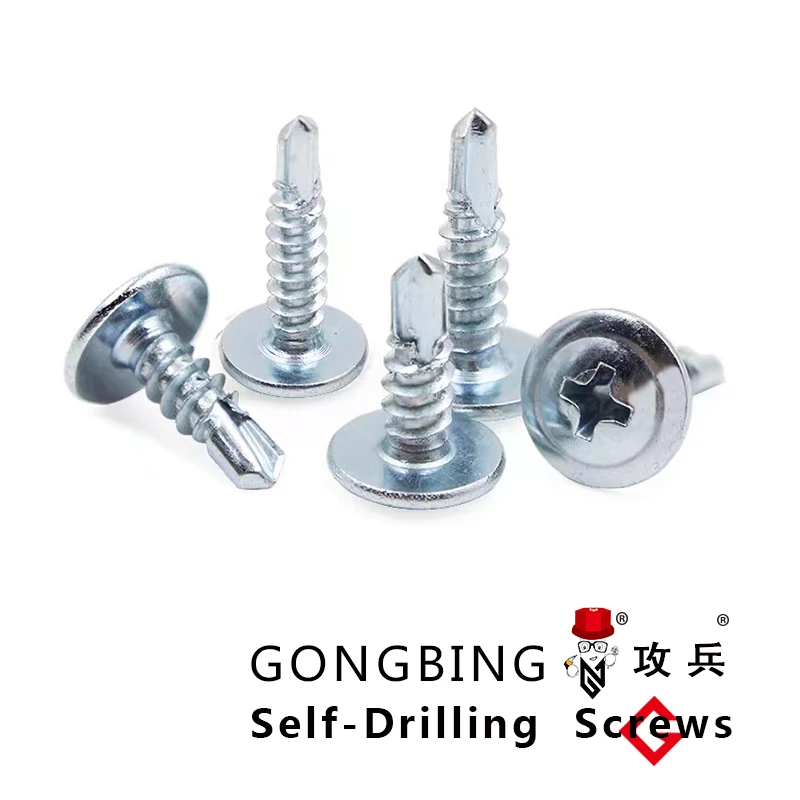Current Pricing Trends for Self-Screw Fasteners in the Market
Understanding the Pricing of Self-Screws
Self-screws, or self-tapping screws, are essential components in various industries, including construction, manufacturing, and DIY projects. Their design allows them to create their own thread in the material being screwed into, making them a preferred choice for many applications. Given their prevalence, understanding the pricing of self-screws is critical for both consumers and businesses. In this article, we will explore the factors influencing self-screw prices, the types available in the market, and tips for purchasing them wisely.
Factors Influencing Self-Screw Prices
1. Material Composition Self-screws can be made from various materials, including stainless steel, carbon steel, brass, and plastics. The raw material's quality influences the price significantly; for example, stainless steel screws, known for their corrosion resistance, tend to be more expensive than carbon steel variants. The choice of material depends on the intended application and environmental exposure, which is why manufacturers may charge a premium for high-quality materials.
2. Size and Dimensions The diameter and length of self-screws also impact their prices. Larger screws or those with specific dimensions required for niche applications may cost more due to the increased raw material and manufacturing complexity. Additionally, specialized screws designed for unique tasks (such as those for high-torque applications) are generally more expensive.
3. Coatings and Treatments Many self-screws are treated or coated to enhance their performance and longevity. Common treatments include galvanization, which protects screws from rust, and various finishes that can affect aesthetics as well as durability. These additional processes can lead to higher prices but often provide improved functionality and lifespan, making them a worthwhile investment.
4. Production Volume Bulk purchasing can significantly affect the price per unit of self-screws. Manufacturers and suppliers often offer discounts for large orders, which can be beneficial for contractors or businesses that require a steady supply. Conversely, individual buyers may pay more for small quantities, making it essential to evaluate needs thoroughly before purchasing.
5. Market Demand and Supply Like any commodity, the pricing of self-screws is influenced by market dynamics. During periods of high construction activity or significant industrial projects, the demand for self-screws can spike, leading to higher prices. Suppliers may respond to global material shortages or increased production costs by adjusting their prices accordingly.
Types of Self-Screws Available
There is a wide variety of self-screws designed for specific applications. Some of the most common types include
- Sheet Metal Screws Designed to fasten metal sheets together, these screws often have sharp threads and a pointed tip for easy insertion. - Wood Screws Specifically crafted for wood, these screws feature a coarse thread and a flat head, which allows them to grip well in wooden surfaces without splitting.
self screw price

- Lag Screws These are heavier-duty self-screws used in heavy applications, such as securing beams. They have a large diameter and are often used with a wrench.
- Self-Drilling Screws Combining a drill and a screw, these are particularly effective in metal applications, eliminating the need for pre-drilling and speeding up installation.
Tips for Purchasing Self-Screws
1. Assess Your Needs Determine the type of material you will be working with and select a screw that best fits the application. Consider factors like load-bearing requirements and environmental conditions.
2. Compare Prices Take the time to compare prices from various suppliers. Online marketplaces often provide competitive pricing but don’t overlook local hardware stores, which may have discounts or promotions.
3. Check Quality Standards Opt for screws that meet industry standards. Quality certification ensures durability and performance, reducing the likelihood of failure during application.
4. Bulk Purchase Benefits If you're part of an industry that frequently uses self-screws, consider buying in bulk to reduce costs. This approach not only saves money but also guarantees a consistent supply for ongoing projects.
5. Seek Expert Advice If you’re unsure about which type of self-screw to choose, consult with experts or suppliers. Their insights can guide you toward the best solutions for your specific needs.
Conclusion
Self-screws are indispensable in various applications, and understanding their pricing can ensure you make informed purchasing decisions. By considering factors such as material, size, coatings, market demand, and production volumes, you can navigate the complexities of the self-screw market effectively. Armed with this knowledge, you will be better equipped to choose the right self-screws for your projects while keeping costs manageable.
-
Wedge Anchor Bolts: Secure Fastening SolutionsNewyddionAug.05,2025
-
Insulation Fixings: Secure and Durable SolutionsNewyddionAug.05,2025
-
Full Threaded Studs: Versatile Fastening SolutionsNewyddionAug.05,2025
-
Expanding Fasteners: Secure and Reliable SolutionsNewyddionAug.05,2025
-
Butterfly Toggle Anchors: Secure and Easy to UseNewyddionAug.05,2025
-
Bracing Solutions for Steel StructuresNewyddionAug.05,2025
